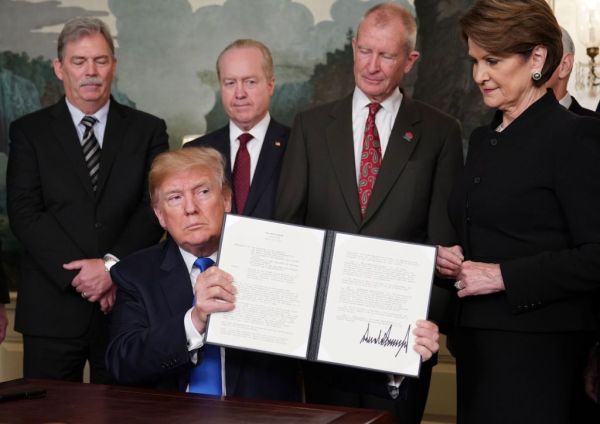Debate surrounding President-elect Donald Trump’s proposed tariff policies is spreading on social media. While members of the incoming administration argue that foreign businesses that export goods to the U.S. would pay the cost of Trump’s proposed tariffs, critics claim that U.S. consumers would be the ones shouldering tariff costs.
“For anyone who missed this in economics class: Tariffs are paid by the buyers of the products, not by the producing country—meaning the cost falls on YOU,” reads one post. Another viral image uses T-shirts as an example to show that tariffs are paid for by domestic buyers. “That is how tariffs work,” it reads. “The consumer pays in the end. (not China as Trump has brainwashed you to beleive).”
The claims are true. Economists broadly agree that domestic consumers bear most of the costs of tariffs.
Tariffs—taxes applied to goods and services purchased from abroad—are typically paid directly by U.S. businesses that import from abroad. The actual cost of the tariff, however, can theoretically fall on the exporter, importer, or eventual consumer. “Under the Trumpian theory, the foreigners lower their prices in recognition of a tariff, and they’re the ones who suffer,” Dr. Kimberly Clausing, an economist at the Peterson Institute for International Economics, told The Dispatch Fact Check. “But all the economic evidence, and frankly theory, suggests that the U.S. buyers and importers are the ones who ultimately pay.”
Clausing’s argument is not unique—there is a general consensus among economists that the costs of tariffs are shouldered mostly by domestic consumers. “As a general rule, most economists agree that the major costs of tariffs are transferred directly to consumers,” Claude Barfield, a trade economist at the American Enterprise Institute, told The Dispatch Fact Check. “The producer may absorb some of [the cost], but most of it will be passed on to the consumer.”
Alongside making imported products more expensive for domestic consumers, tariffs can also raise prices on domestically manufactured products that use imported parts. A U.S. auto manufacturer that imports steel from abroad, for example, would face greater manufacturing costs if steel were made more expensive by tariffs. “That means the final product is more expensive than it would have been, and so the U.S. manufacturer is now less competitively situated to other companies in other countries that aren’t facing the same tariffs,” Barfield explained.
Tariffs can also make domestic goods that compete with imports more expensive by giving U.S. manufacturers more pricing power in a market. “If you’re a California winemaker, and suddenly Australian, French, and Italian wines are more expensive because of tariffs, that gives you more room to raise your own prices,” Clausing explained.
This theory of how tariff costs are distributed is backed up by evidence from Trump’s first term in office. Washing machines and dryers, for example, were subject to tariffs imposed by the Trump administration in 2018 and became measurably more expensive in the months after the tariffs were introduced. The Dispatch Fact Check addressed this price increase in a February piece:
“For most, if not almost all commodities, when a tariff is placed on imports of the commodity (for example, steel or refrigerators) the price for the commodity paid by consumers goes up, not always by the full amount of the tariff, but usually by most of the amount of the tariff,” Vincent Smith, economist and director of Agricultural Policy Studies at the American Enterprise Institute, told The Dispatch Fact Check. “Domestic producers facing import competition then benefit from those higher prices but all consumers in the country bear a cost.”
American consumers experienced this cost as a result of Trump’s 2018 tariffs. Research from economists at the University of Chicago’s Becker Friedman Institute found that the price of washing machines and dryers rose nearly 12 percent after import tariffs were imposed. “It was no accident that once the Trump administration imposed tariffs on imports of kitchen appliances and washers and dryers, the prices of those commodities in stores like Lowes and Home Depot jumped by between $50 and $100 for appliances of modest quality, and more for higher end appliances,” Smith explained.
If you have a claim you would like to see us fact check, please send us an email at factcheck@thedispatch.com. If you would like to suggest a correction to this piece or any other Dispatch article, please email corrections@thedispatch.com.








Please note that we at The Dispatch hold ourselves, our work, and our commenters to a higher standard than other places on the internet. We welcome comments that foster genuine debate or discussion—including comments critical of us or our work—but responses that include ad hominem attacks on fellow Dispatch members or are intended to stoke fear and anger may be moderated.
With your membership, you only have the ability to comment on The Morning Dispatch articles. Consider upgrading to join the conversation everywhere.